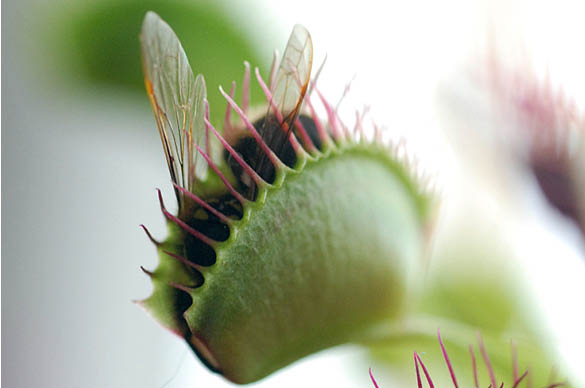Carnivorous plants learned to survive by eating insects through evolution. As the soil in a bog or pond is of very poor in nutrition, catching insects helped the plant to survive. Therefore insects are important to thrive for carnivorous plants. This is also why carnivorous plants have so many traps. This way the plant increases its chances to catch food.
A carnivorous plant regardless of species does need insects to survive, as they get very little or no nutrition from the soil. In fact, you often see a carnivorous plant growing on soil that is poor in food. Naturally, carnivorous plants do not need extra nutrition, only when a carnivorous plant is kept in a place where there is not enough supply of insects, you can hand feed it.
What to feed my Carnivorous Plant?
If you keep your carnivorous plant in a spot where there are not many insects available, you will need to feed the plant manually to thrive. Live insects are the best option to feed your carnivorous plant with, but dried insects like mealworms, bugs or fish food will do the job.
Note: Carnivorous Plants only need insects in the growing season and that is during Spring and Summer. During Autumn and Winter carnivorous plants will enter their dormancy period and won’t need insects due to that.
How to feed my Carnivorous Plant?
There are more than 750 species in the carnivorous plant family and each plant has its own habitat in which it grows. Also, each carnivorous plant has its own method of trapping insects and therefore each species also has its own food. Each carnivorous plant uses its own type of trap to catch and digest an insect. These trapped insects are the food source for the carnivorous plant. This is because the carnivorous plant cannot digest nutrients from soil. There is something that every carnivorous plant does have in common and that is, they all use a sweet nectar substance.
Pitcher Plants (Nepenthes, Sarracenia & Cephalotus)
The pitcher plants are the easiest to feed. You can just drop (dried) insects in to their pitchers by hand or with small tweezers. Feed your pitcher plant every 2-3 weeks during the growing season.
Venus Flytraps (Dionaea)
The Venus Flytrap is one of the most popular plants thanks to its moving traps. Use tweezers to add mealworms, bugs or flies into the trap. The trap of a Dionaea has little trigger hairs and as soon as its touched twice, it will close. The size of the food should be approximately 1/4 of the size of the trap generally.
Sundews (Drosera) and Butterworts (Pinguicula
Droseras and Pinguiculas are generally quite good in catching insects themselves. They will catch the tiniest insects like fruit flies as food source. If you see your drosera or pinguicula is struggling because of too less food, you could feed it every 2-3 weeks with (dried) bloodworms. Usually the traps of the sundew will curl up around the prey within 20 minutes.

